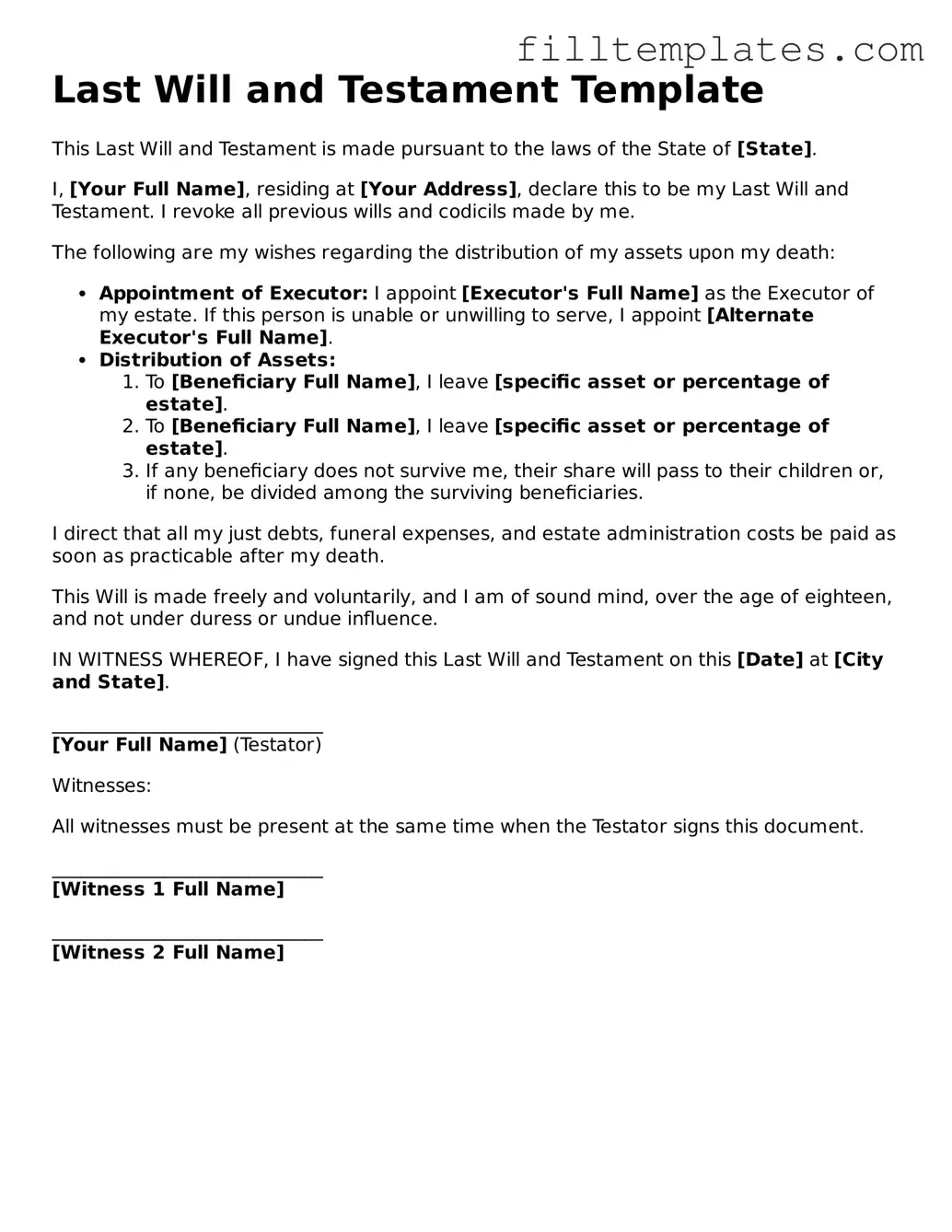Last Will and Testament Template
This Last Will and Testament is made pursuant to the laws of the State of [State].
I, [Your Full Name], residing at [Your Address], declare this to be my Last Will and Testament. I revoke all previous wills and codicils made by me.
The following are my wishes regarding the distribution of my assets upon my death:
- Appointment of Executor: I appoint [Executor's Full Name] as the Executor of my estate. If this person is unable or unwilling to serve, I appoint [Alternate Executor's Full Name].
- Distribution of Assets:
- To [Beneficiary Full Name], I leave [specific asset or percentage of estate].
- To [Beneficiary Full Name], I leave [specific asset or percentage of estate].
- If any beneficiary does not survive me, their share will pass to their children or, if none, be divided among the surviving beneficiaries.
I direct that all my just debts, funeral expenses, and estate administration costs be paid as soon as practicable after my death.
This Will is made freely and voluntarily, and I am of sound mind, over the age of eighteen, and not under duress or undue influence.
IN WITNESS WHEREOF, I have signed this Last Will and Testament on this [Date] at [City and State].
_____________________________
[Your Full Name] (Testator)
Witnesses:
All witnesses must be present at the same time when the Testator signs this document.
_____________________________
[Witness 1 Full Name]
_____________________________
[Witness 2 Full Name]
